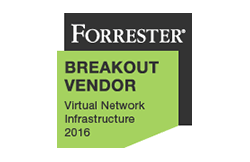Kentik Blog: Analyst Report
























Not long ago network flow data was a secondary source of data for IT departments trying to better understand their network status, traffic, and utilization. Today it’s become a leading focus of analysis, yielding valuable insights in areas including network security, network optimization, and business processes. In this post, senior analyst Shamus McGillicudy of EMA looks at the value and versatility of flow for network analytics.
As the architecture of digital business applications transitions toward the cloud, network teams are increasingly involved in assuring application performance across distributed infrastructure. Filling this new role effectively requires a deeper toolset than provided by APM alone, with both internal and external network-level visibility. In this post from EMA’s Shamus McGillicudy, we look at how modern NPM solutions empower network managers to tackle these new challenges.
As cloud computing continues to gain ground, there’s a natural tension in IT between cloud advocates and those who prefer the status quo of in-house networking. In part two of his three-part series on this “culture war,” analyst Jim Metzler clarifies what is — and is not — involved in the transition to the cloud, and how the adoption of cloud computing impacts the way that network organizations should think about the management tools they use.
Kentik is honored to be the sole network monitoring provider named by Forrester Research as a “Breakout Vendor” in a December 2016 report on the Virtual Network Infrastructure (VNI) space. The report asserts that I&O leaders can dramatically improve customer experience by choosing cloud networking solutions, and cites Kentik Detect as one of four groundbreaking products that are poised to supercede typical networking incumbents.
Every so often a fundamental shift in technology sets off a culture war in the world of IT. Two decades ago, with the advent of a commercial Internet, it was a struggle between the Bellheads and the Netheads. Today, Netheads have become the establishment and cloud computing advocates are pushing to upend the status quo. In this first post of a 3-part series, analyst Jim Metzler looks at how this dynamic is playing out in IT organizations.
Network security depends on comprehensive, timely understanding of what’s happening on your network. As explained by information security executive and analyst David Monahan, among the key value-adds of Kentik Detect are the ways in which it enables network data to be applied — without add-ons or additional charges — to identify and resolve security issues. Monahan provides two use cases that illustrate how the ability to filter out and/or drill-down on dimensions such as GeoIP and protocol can tip you off to security threats.
CIOs focus on operational issues like network and application performance, uptime, and workflows, while CISOs stress about malware, access control, and data exfiltration. The intersection of these concerns is the network, so it seems evident that CIOs and CISOs should work together instead of clashing over budgets and tools. In this post, network security analyst David Monahan makes the case for finding a solution that can keep both departments continuously and comprehensively well-informed about infrastructure, systems, and applications.
Today’s MSPs frequently find themselves without the insights needed to answer customer questions about network performance and security. To maintain customer confidence, MSPs need answers that they can only get by pairing infrastructure visibility with traffic analysis. In this post, guest contributor Alex Hoff of Auvik Networks explains how a solution combining those capabilities enables MSPs to win based on customer service.
Intelligent use of network management data can enable virtually any company to transform itself into a successful digital business. In our third post in this series, we look at areas where traditional network data management approaches are falling short, and we consider how a Big Data platform that provides real-time answers to ad-hoc queries can empower IT organizations and drive continuous improvement in both business and IT operations.
Looking ahead to tomorrow’s economy, today’s savvy companies are transitioning into the world of digital business. In this post — the second of a three-part series — guest contributor Jim Metzler examines the key role that Big Data can play in that transformation. By revolutionizing how operations teams collect, store, access, and analyze network data, a Big Data approach to network management enables the agility that companies will need to adapt and thrive.











